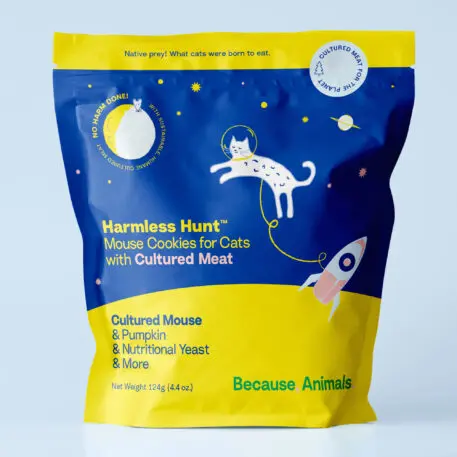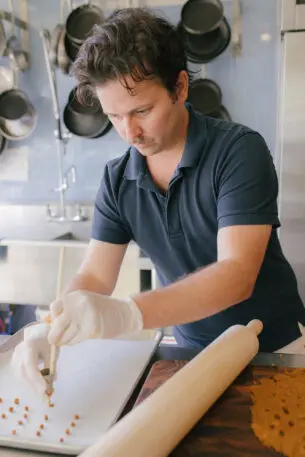If you want to try some, cultured meat still isn’t easy to find: So far, only one form of cultured chicken has regulatory approval, and only in Singapore. But more is coming, and your pets won’t have to wait long either. Soon there will be cultured meat for pet food, which could help cut the 64 million tons of carbon pollution that comes from producing meat for dog and cat food.
The biotech startup Because, Animals is the first to focus on pet food, and hopes to launch its first products—including a “mouse cookie” snack for cats—by 2022. “The ultimate goal of most cultured meat companies is to create a product that will allow animals to be taken out of the food supply chain,” Shannon Falconer, CEO and cofounder of Because, Animals, said in an email. “And, given that humans are the largest consumers of traditional meat, it makes sense to focus on humans when making a cultured meat product. However, something that most people are unaware of is that, in addition to humans, there is another hugely significant population driving the animal agriculture industry forward: our pets.”

More than a quarter of the environmental impact of animal agriculture, by one estimate, comes from feeding pets meat. Pet food often uses rendered meat, the grisly ingredients that people don’t want (like viscera, heads, bones, and blood) or meat that can’t legally be sold because the livestock was diseased or dying. The volume of this rendered meat is so large that if farmers couldn’t sell it, they couldn’t afford to dispose of it as biohazardous waste; Falconer argues that pet food helps prop up the entire industry.
While some companies make plant-based pet food, dogs and cats are arguably healthier when they eat meat, particularly cats, which need certain proteins that can only be found in meat. When the startup started product development for its first cat food, it decided to begin not with beef or chicken but mouse. “Cats evolved as predatory animals, with their food sources being mice, rats, rabbits, lizards, and insects,” says Falconer. “Although chicken, beef, and fish are the main sources of meat in pet foods, studies have shown that these proteins are also among the leading food allergens in cats and dogs.” The only reason that these meats are used in pet food, she says, is because they’re already being produced for humans.

The first snack, called Cultured Mouse Cookies for Cats, has been tested by cats and is ready for production, though the company is still working on how to fully scale up its process. Like cultured meat under development for humans, the process starts by harvesting cells from an animal—in this case, a mouse (the mouse isn’t harmed)—and then feeding those cells nutrients inside a bioreactor, where they grow and turn into real meat that is animal-free. Cultured rabbit for dogs will come next.
The final challenge, as with cultured meat for humans, is regulatory approval. “Regulatory approval will look different depending on the country,” Falconer says. “But the fundamental question that any and every regulatory authority will ask is: How do we know it’s safe? There isn’t a single experiment that Because, Animals conducts that doesn’t place the health and safety of our cultured meat as our highest priority. We’re incredibly thorough, so we don’t expect to have any hiccups around regulatory approval aside from the inherently lengthy review process.”
Recognize your brand’s excellence by applying to this year’s Brands That Matter Awards before the early-rate deadline, May 3.
